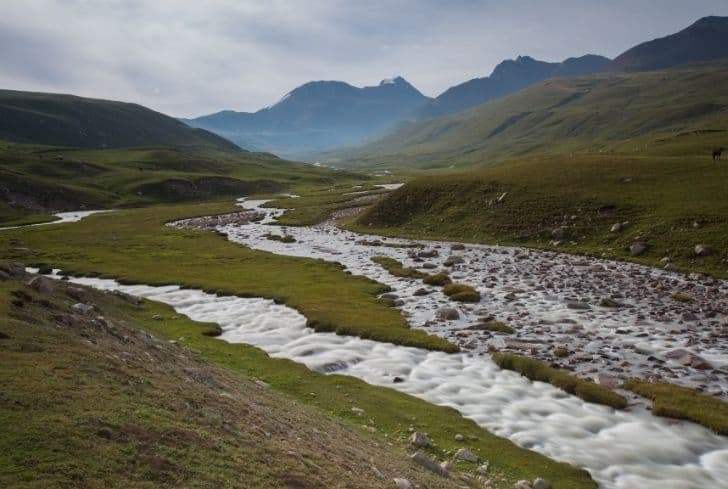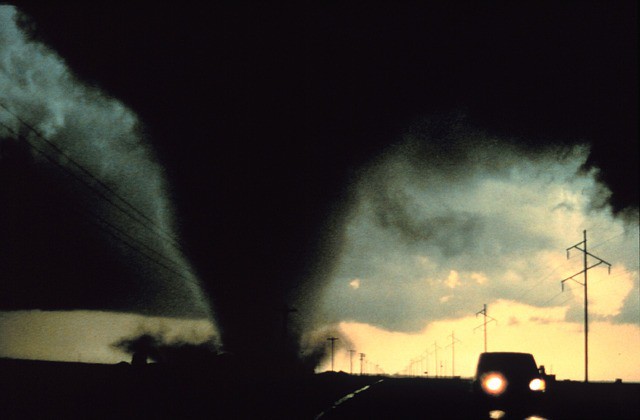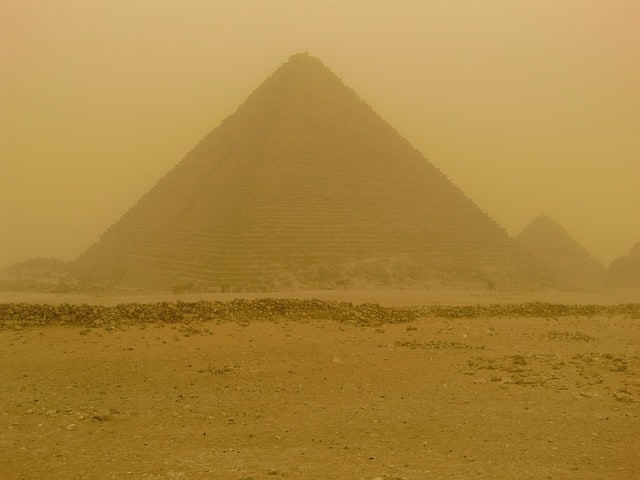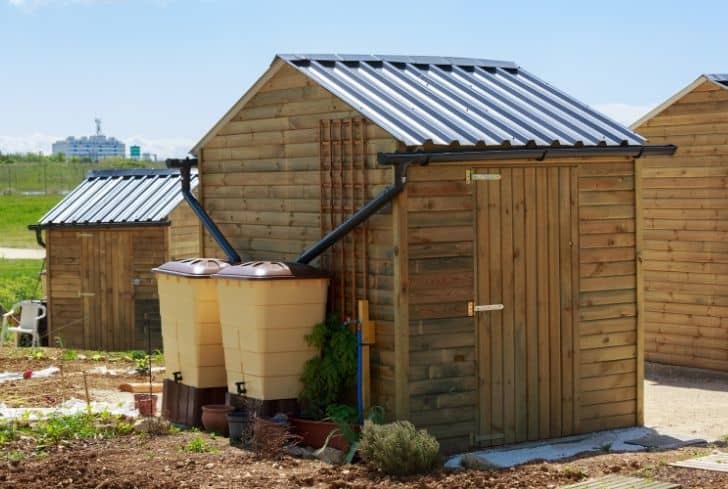Sinkholes: How Do They Form and Types of Sinkholes
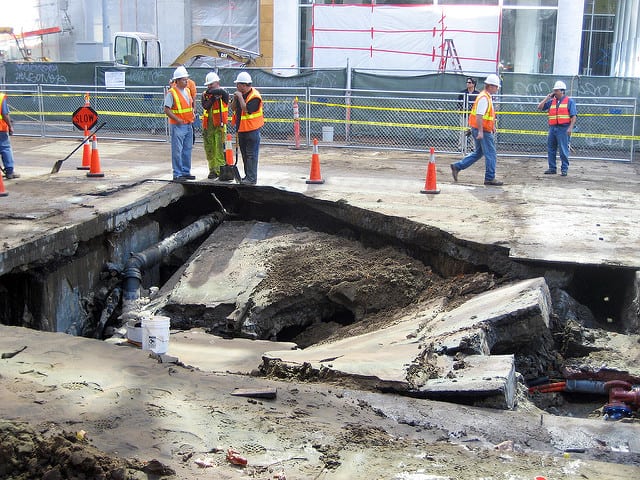
According to the United States Geological Survey (USGS), sinkholes are pits in the ground that occur in areas where water collects without external drainage. Essentially, a sinkhole is any hole in the ground formed by erosion and the drainage of water. It can be just a few meters across or large enough to swallow a whole building.
Sinkholes normally form gradually, but sometimes, the collapse can be sudden. Those sudden sinkholes are usually the ones that open up and swallow buildings and cars. Sinkholes can be natural or man-made and they normally start forming a long time before they actually happen. A sinkhole can range anywhere between a small depression in the ground and a gigantic hole reaching down to at least 500 meters.
Unlike earthquakes, sinkholes are not really tracked and it can be difficult to tell where they appear. In fact, we can only talk about areas prone to earthquakes, and they include a good portion of the Middle East, which is dominated by Karst terrain. In the US, Florida is one of the states that are most prone to sinkholes. The world’s largest sinkhole is in Chongquig, China, reaching down 987 feet.
Wikipedia defines Sinkhole as,
“A sinkhole, also known as a cenote, sink, sink-hole, shakehole, swallet, swallow hole, or doline (the different terms for sinkholes are often used interchangeably), is a depression or hole in the ground caused by some form of collapse of the surface layer. Most are caused by karst processes—for example, the chemical dissolution of carbonate rocks or suffosion processes.“
Let’s look at how sinkholes are formed.
How Do Sinkholes Form?
Sinkholes largely occur in areas known as Karst Terrain. These are areas of land with water-soluble bedrock, such as gypsum and limestone. Eventually, the bedrock can’t support the surface anymore and it abruptly collapses inwards. How does this all happen?
Rainwater normally seeps through the soil. It absorbs carbon dioxide and reacts with decaying vegetation during the process. Consequently, the water that reaches the bedrock is acidic. As the acidic water dissolves the rock, it carves out underground channels, or conduits, for water.
The channels subsequently help to create underground basins known as recharge areas. The recharge areas play an integral role in the development of sinkhole as water flowing from them into the subsurface erodes bedrock. This results in the creation of cavernous spaces.
The soil or sand over the bedrock collapses into a sinkhole when it is no longer supported owing to the cavernous space below. The eventual collapse of the surface may occur within a few minutes or several hours.
While sinkholes tend to occur suddenly, the underlying causes of them normally have been developing for a while. Fortunately, there are some warning signs that you could be standing in a sinkhole waiting to happen. They include:
- Fresh cracks in the foundations of building
- Cracks in the ground outside
- Cracks in interior walls
- Depressions in the ground
- Windows and doors becoming difficult to open or close
- Trees that tilt or fall
- Sudden appearance of a hole in the ground
It is also worth noting that some human activities can lead to the formation of sinkholes. When you are constructing a basement, for instance, you may need to drain water. You can destabilize the soil in the process as the water washes away small particles, such as sand, which are essential for holding larger particles together. This raises the chances of collapse. Likewise, mines that are not in use anymore can collapse.
A lack of water can also result in sinkholes. Namely, in some underground voids, water could actually be holding up some thin overhang of the earth. Should that water level fall, the overhang will have no support and it will collapse.
That said, let’s explore the different types of sinkholes.
Types of Sinkholes
According to geologists, there a three main types of sinkholes – dissolution, cover-subsidence, and cover-collapse sinkholes. However, we also have artificial sinkholes, caused by human activities.
Shall we have a detailed look at the types of sinkholes?
1. Dissolution Sinkhole
Also known as solution sinkholes, this types of sinkholes occur where there is little soil or vegetation over the soluble bedrock. Rain and runoff water gradually percolate through crevices in the rock, dissolving it. Consequently, a depression slowly forms.
These types of sinkholes sometimes become ponds when the depression gets lined with debris, which traps water inside. Dissolution sinkholes develop gradually and are normally not dangerous. However, the ones that become ponds can drain abruptly if water breaks through the protective bottom layer.
2. Cover-subsidence Sinkhole
Cover-subsidence sinkholes occur in areas where sand covers the bedrock. An example of such an area is an overburden composed of up to 100 feet of sand with some clay underneath before yielding to soft limestone. The limestone will dissolve gradually, eventually leaving a void.
Then, the sediment from the overburden will seep in, forming a bowl-like depression in the Earth. Cover-subsidence sinkholes are normally just a few feet across and deep. They are smaller compared to many other sinkholes. Any explanation for that?
After a cover-subsidence sinkhole reaches a certain size, sand and sediment usually pour into the hole. This sand and sediment inflow can block the water outflow by blocking the cracks and passages that connect the sinkhole to underground water channels. In light of the fact that water no longer has nowhere to drain, many of these sinkholes end up becoming ponds.
3. Cover-collapse Sinkhole
Cover-collapse is the most dangerous type of sinkhole. These types of sinkholes largely occur where the bedrock is covered by a layer of clay. Underneath the clay layer, however, water dissolves an underground cavity.
Then, ground sediments start to gradually erode into the cavity from the bottom. The ground continues to disintegrate from beneath. Eventually, just a thin layer is left between the surface and the underground cavity. When the thin layer collapses, a sinkhole will open up suddenly, swallowing anything on top, including cars and buildings.
4. Artificial Sinkholes
As stated earlier in this article, humans also can create sinkholes. Artificial sinkholes are actually quite common, especially in urban areas. That’s why you are advised to conduct a thorough investigation before you begin to construct a building.
These types of sinkholes can be caused by various human activities, including groundwater pumping and construction activities. However, the most common activities that result in artificial sinkholes are mining, drilling, considerable changes in weight, as well as a tremendous increase in water flow, such as a construction of an artificial pond. So, how does all these cause sinkholes?
Essentially, more water appearing in the system dissolves and creates an underground cavern. Another possibility is that the underground opening is already present, and there’s a rise in pressure exerted on the surface. These two scenarios can also occur at the same time. Whenever there’s a disruption of the earth’s structural and chemical balance, sinkholes can occur.
The Word’s Largest Sinkhole
The world’s largest sinkhole is found in the South China Sea. According to Chinese researchers, the blue hole is 987-feet (662 meters) deep. Note that an underwater sinkhole is also known as a blue hole.
This blue hole is found at 16.31 degrees north latitude and 111.46 degrees east longitude below the surface of the South China Sea. It is about 300 feet deeper compared to Dean’s Blue Hole in the Bahamas, which was considered the world’s deepest sinkhole before the discovery of the South China Sea blue hole.



